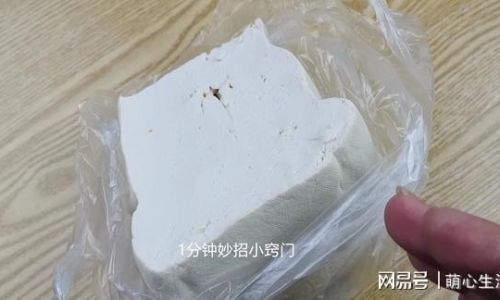Tofu, a versatile and nutrient-rich food derived from soybeans, has become a staple in kitchens worldwide. Its delicate texture and mild flavor make it adaptable to countless dishes, from stir-fries to desserts. However, tofu’s high moisture content and lack of preservatives render it highly perishable, especially when stored at room temperature. Understanding how long tofu can safely remain unrefrigerated is critical to avoiding foodborne illness and minimizing waste. This article explores the factors influencing tofu’s shelf life at ambient temperatures, the risks of improper storage, and practical guidelines for ensuring its safety and quality.
The Composition of Tofu: Why It Spoils Quickly
Tofu is produced by curdling soy milk with a coagulant, typically calcium sulfate or magnesium chloride. The resulting curds are pressed into blocks, with variations in firmness determined by water content. Silken tofu, for example, contains up to 90% water, while extra-firm varieties retain less moisture. This high water activity creates an ideal environment for microbial growth, including bacteria, molds, and yeasts.
At room temperature (typically 68–72°F or 20–22°C), these microorganisms proliferate rapidly, breaking down the tofu’s structure and producing off-flavors, textures, and toxins. Unlike aged cheeses or cured meats, tofu lacks fermentation or preservation techniques that inhibit spoilage. Consequently, its shelf life without refrigeration is inherently limited.
Factors Affecting Shelf Life at Room Temperature
Several variables determine how long tofu remains safe to consume when unrefrigerated:

-
Type of Tofu:
- Silken Tofu: With its custard-like consistency and minimal pressing, silken tofu spoils fastest. Unopened, it may last 2–3 hours at room temperature, but once exposed to air, this drops to 1–2 hours.
- Soft/Medium Tofu: Slightly firmer than silken varieties, these may last 3–4 hours unopened and 2–3 hours after opening.
- Firm/Extra-Firm Tofu: Denser textures with lower moisture content can endure 4–6 hours unopened, but exposure to air reduces this to 2–4 hours.
-
Packaging:
- Vacuum-Sealed Tofu: Airtight packaging slows microbial growth by limiting oxygen exposure. Unopened vacuum-sealed tofu may last 4–6 hours at room temperature.
- Water-Packed Tofu: Tofu submerged in water (common in Asian markets) is more perishable. Once removed from refrigeration, its shelf life at room temperature is 2–3 hours.
-
Environmental Conditions:
- Temperature: Higher ambient temperatures accelerate spoilage. Tofu left in a warm kitchen (75°F/24°C+) may degrade twice as fast as in a cooler room.
- Humidity: Damp environments promote mold growth. Storing tofu in a dry, well-ventilated area extends its viability slightly.
- Hygiene: Cross-contamination from utensils, hands, or surfaces introduces bacteria, shortening shelf life.
-
Preservatives:
Some commercially produced tofu contains additives like calcium chloride or vinegar to extend shelf life. These products may last 1–2 hours longer than preservative-free varieties.
Signs of Spoilage: When to Discard Tofu
Identifying spoiled tofu is crucial for health safety. Key indicators include:
- Off Odors: Fresh tofu has a neutral, bean-like scent. Spoilage often emits sour, yeasty, or putrid aromas.
- Discoloration: Fresh tofu ranges from pale white to light beige. Gray, yellow, or greenish hues signal microbial activity.
- Sliminess: A sticky or mucous-like texture indicates bacterial breakdown.
- Gas Production: Bloated packaging or bubbles in water-packed tofu suggest fermentation or gas-producing bacteria.
- Mold Growth: Fuzzy patches in blue, green, or black are clear signs of contamination.
Important Note: Never taste tofu to test its safety. Discard it immediately if any of these signs are present.
Traditional vs. Modern Preservation Methods
Throughout history, cultures have developed techniques to extend tofu’s shelf life without refrigeration:
-
Fermentation:
- Processes like pickling or aging in brine (e.g., Chinese stinky tofu) introduce beneficial bacteria that inhibit pathogens. Fermented tofu can last days to weeks at room temperature but requires specific preparation.
-
Salting:
Rubbing tofu with salt draws out moisture, creating an inhospitable environment for microbes. Salted tofu may last 6–8 hours unrefrigerated.
-
Drying:
- Sun-drying or air-drying reduces moisture content, yielding products like koya-dofu (freeze-dried tofu), which can be stored indefinitely at room temperature when fully dehydrated.
-
Oiling:
- Submerging tofu in oil (e.g., Japanese abura-age) blocks oxygen, slowing oxidation and microbial growth.
Modern methods, such as pasteurization and vacuum sealing, have revolutionized tofu storage. Pasteurized tofu, heated to kill pathogens, can last 4–6 hours unopened at room temperature. However, once opened, its shelf life mirrors that of fresh tofu.
Food Safety Risks of Improper Storage
Consuming spoiled tofu can lead to food poisoning, with symptoms including nausea, vomiting, diarrhea, and abdominal cramps. Pathogens like Bacillus cereus, Staphylococcus aureus, and Escherichia coli thrive in high-protein, high-moisture foods like tofu. These bacteria produce toxins that may not be destroyed by cooking, posing risks even if the tofu is reheated.
Case Study: In 2018, a restaurant in Japan faced scrutiny after diners fell ill from staphylococcal food poisoning linked to improperly stored tofu. The incident underscored the importance of strict temperature controls, even for traditionally preserved products.
Recommendations for Safe Storage and Consumption
To maximize tofu’s shelf life at room temperature:
-
Purchase Wisely:

Buy tofu from refrigerated sections, and check expiration dates. Avoid packages with dents, leaks, or bloating.
-
Minimize Exposure:
Keep unopened tofu in its packaging until use. Once opened, transfer it to an airtight container submerged in fresh, cold water. Change the water every 2 hours to slow bacterial growth.
-
Monitor Time:
Use the “2-Hour Rule” as a guideline: discard perishable foods left unrefrigerated for over 2 hours. For tofu, reduce this to 1–1.5 hours in warm environments.
-
Prioritize Refrigeration:
Refrigerate tofu at 40°F (4°C) or below. Fresh tofu lasts 3–5 days refrigerated, while vacuum-sealed varieties may keep for 7–10 days.
-
Freeze for Longevity:
Freeze tofu for up to 5 months. Thawing alters texture but preserves safety.
-
Cook Before Spoilage:
If tofu has been unrefrigerated, cook it thoroughly to kill bacteria. However, cooking does not reverse spoilage or toxin production.
Cultural Practices and Modern Adaptations
In many Asian countries, tofu is sold fresh daily at markets, emphasizing the importance of consumption within hours of purchase. Traditional recipes often incorporate tofu immediately after purchase, relying on fermentation or cooking to extend its usability.
Modern consumers, however, face challenges like busy schedules and limited access to refrigeration. Innovations like shelf-stable tofu (aseptically packaged and requiring no refrigeration until opened) offer solutions, though these products often contain additives and differ in texture from fresh tofu.
Conclusion: Balancing Convenience and Safety
Tofu’s delicate nature demands vigilance in storage and handling. While room-temperature storage is sometimes unavoidable, its duration should be minimized to mitigate health risks. By understanding the interplay of tofu type, packaging, and environmental factors, consumers can make informed decisions to balance convenience with safety.
In an era where food waste is a global concern, proper tofu storage also supports sustainability. Extending its edible life by even a few hours reduces waste and preserves resources. Whether adhering to traditional wisdom or embracing modern preservation, the key lies in respecting tofu’s perishability—a trait that, when managed correctly, ensures both safety and culinary delight.
Final Note: When in doubt, follow the adage “When unsure, throw it out.” The cost of replacing tofu is minimal compared to the health risks of consuming spoiled product. Prioritize refrigeration, handle tofu hygienically, and savor this ancient food with confidence.






0 comments